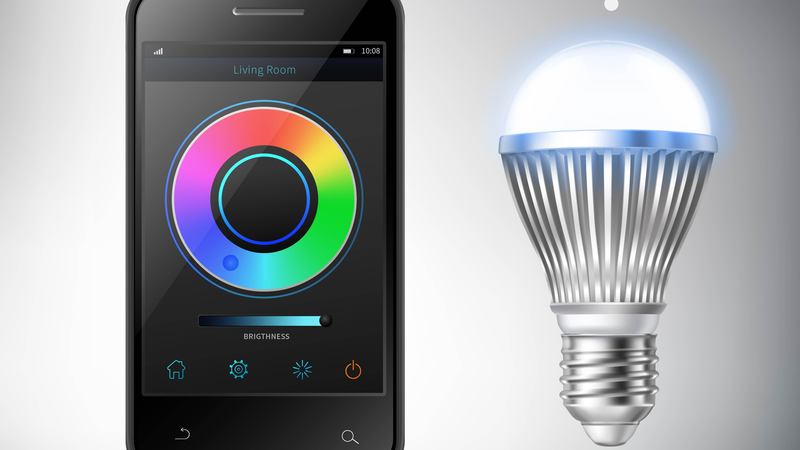Most bulbs are simple halogen or LED (Light-emitting Diode) varieties; the former is your average, traditional bulb, with a filament inside, whereas LEDs are very different. LED bulbs are also the basis for smart bulbs, which are capable of much more than an everyday, boring halogen light bulb.
Smart bulbs are titled as such owing to their abilities beyond a regular bulb. Using wireless connectivity, they can connect to mobile phone applications to open up a range of new functionality that just isn’t capable with a traditional, filament-based halogen unit.
What’s more, simply using an LED bulb over a halogen alternative can save you money on your energy bill. LEDs have an average lifespan of around 50,000 hours as opposed to around 1,000 halogen hours, as well as using less energy to operate.
Based on all the above, now is as good a time as any to get up to date with the latest lighting technology, replacing the worn-out halogen bulbs within your home with smart LEDs. Read on to discover the range of functionality you can gain from synchronising your lights with your smartphone.
Remote-control
Remote control over your lights is now a possibility through several different mediums. First and foremost, you can control 'On' or 'Off' functions from the comfort of your seat if you own a Google Home or Amazon Echo, simply by using voice commands. Also, you can usually turn your lights on and off whilst out of the house, using the application provided by the bulb manufacturer.
Some bulbs also have another remote-control function, controlled by a timer setting. These timer features allow you to set a schedule against which your lights will illuminate, meaning you can create the illusion that somebody is home whilst you're away on holiday.
Brightness variation
Whereas traditional light bulbs require a dinner switch to be varied in brightness, smart bulbs achieve the same function in a far simpler way. Once you've connected a compatible bulb to your light fixture, you'll have fine-grained control over the brightness of the bulb, usually via a sliding bar. If you’re the kind of person who likes to switch off from their screens prior to sleep, and relax with a good book, then you can reduce the brightness of the room down to a very dim setting, yet still provide enough light to see the words on the pages.
Improved sleep
Though this won't necessarily be applicable to every type of smart LED, some of these products are designed to facilitate better sleep patterns and can directly affect the natural production of melatonin. This is a hormone produced by the human body, which regulates sleeping patterns and levels of wakefulness. Controlled variation in the levels of light emitted from the bulb result in a reduction of melatonin during daylight hours, and an increase towards the evening when it’s time to hit the pillow.
Music streaming
An additional function that is supported by some smart bulbs, albeit usually being more expensive, is the ability to wirelessly stream music. These bulbs normally connect to an application like Apple Music or Spotify. Once connected, they can also often be programmed to pulse assorted colours in time with the beat of your music, making them perfect for the younger ones’ rooms. Although sound quality won't be quite as good as a regular or Bluetooth speaker, owing to the small size and space for components, it's still an incredible leap in technology.
Colour control
In addition to being dimmable, these bulbs also allow colour changing, through a broad spectrum of distinct colours; some bulbs are capable of hitting a spectrum containing millions of varieties. Normally, this is accessible through a colour wheel within the application provided by the bulb’s manufacturer. This function can be useful in a variety of scenarios, including warming or cooling the feel of a specific room, or colourising a space for a movie night or party.
Safety?
For your smart LED to remain ‘smart’, you’ll need to ensure that the switch you’d normally use is left turned on at the wall. This ensures that a constant power supply is available to the bulb, whilst the actual control over whether it’s turned on or off is transferred from the wall to the bulb itself.
This type of always-on and always-connected device is a recent technology, and there will continue to be questions about its security as we move forward. However, in terms of general safety, providing you buy from a reputable brand and company, there’s no recent evidence to suggest that these bulbs provide any more of an electrical hazard in the home when compared to a traditional halogen bulb.
Speak to WiseGuys
WiseGuys can help with any device problems, as well as advising on smartphones and smartphone applications. If you need to speak to a support agent, then you can get in touch with us by calling 0808 123 2820.



Recent Comments